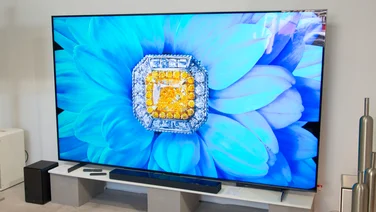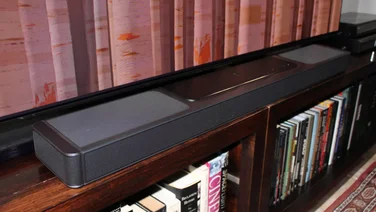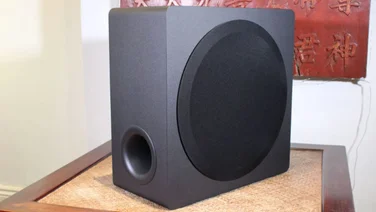To help us provide you with free impartial advice, we may earn a commission if you buy through links on our site. Learn more
- Best indoor TV aerial: At a glance
- The best indoor TV aerials to buy in 2024
- 1. One For All SV9430: Best free-standing indoor TV aerial
- 2. August DTA240: Best compact aerial for travel
- 3. RG Tech Monarch 50: Best low-profile aerial for weak signal areas
- 4. One For All SV9494: Best indoor TV aerial for advanced features
- How to buy the best indoor TV aerial for you

You would be forgiven for thinking that the days of the best indoor TV aerials are numbered. We rely so heavily on the streaming and catch-up services available on smart TVs that aerials are an afterthought for most.
But for some, an indoor TV aerial remains an essential purchase. If you’re yet to join the smart revolution and prefer watching terrestrial telly live, the best indoor TV aerials can help you access a good range of Freeview digital channels – even the more challenging HD channels. And with innovative designs and materials, the indoor aerials of today are both highly effective and relatively discreet.
With various options out there from different brands, picking the right one can be tricky. Fortunately, we’ve used our knowledge and extensive research to help find you the best aerial for your specific needs. You can check out our mini reviews below, but if you’ve got any questions, you’ll find our buying guide at the bottom of the page.
Best indoor TV aerial: At a glance
| Best compact aerial for travel | August DTA240 (~£13) | |
| Best aerial for weak signals | RG Tech Monarch 50 (~£25) | |
| Best free-standing aerial | One For All SV9430 (~£34) | |
| Best aerial for advanced features | One For All SV9494 (~£110) |
The best indoor TV aerials to buy in 2024
1. One For All SV9430: Best free-standing indoor TV aerial
Price when reviewed: £34 | Check price at John Lewis

Great for… slim design, easy to position
Not so great for… power supply has to be kept plugged in, short cable
It’s not quite as slimline as a flat-panel model, but we think this is a tasteful free-standing aerial that will nestle nicely among your AV equipment. Its built-in amplifier features a filter to block out interference from 4G signals, and the design is very forgiving when it comes to positioning and angle.
It works well too. We found the One for All picked up all the channels available in our area, with more consistent HD reception than the cheaper, unamplified models. The shortish cable might be a pain if your TV is wall-mounted, though, and you will need to keep the power supply plugged in because reception with the amplifier switched off is close to non-existent.
Key specs – Type: Flat-panel; Amplified: Yes; Cable length: 1.5m; Extras: None; Dimensions: 240 x 48 x 48mm; Weight: 499g
2. August DTA240: Best compact aerial for travel
Price when reviewed: £13 | Check price at Amazon

Great for… compact design, use in the car
Not so great for… not weatherproof, short cable
The August DT240 High Gain TV aerial has a compact, monopole design, with a magnetic stand that will clamp onto a wide range of metallic surfaces, including radiators. We also liked the fact that it will attach to the roof of a vehicle, which makes it a good choice for travelling. However, the downside here is that it’s not weatherproof in any way, so you’ll need to keep an eye on the sky if you want to use it in the great outdoors.
Given this aerial’s small size and design, we were braced for poor performance, but the August actually picked up the same set of channels as the 1byone aerial and was slightly less fussy about positioning. Freeview HD channels did seem a little more prone to blocky artefacts, however, so we’d suggest something beefier for weak signal areas – and watch out for the short 1.5m cable.
Key specs – Type: Monopole aerial; Amplified: No; Cable length: 1.5m; Extras: None; Dimensions: 158 x 140 x 70mm; Weight: 231g
3. RG Tech Monarch 50: Best low-profile aerial for weak signal areas
Price when reviewed: £25 | Check price at Amazon

Great for… weak signal areas, long cord
Not so great for… easy positioning
If you’re struggling with poor reception, the RG Tech Monarch 50 could be the aerial for you. It’s just 8mm thick, with two rectangular wings going in either direction from the central cable. It comes in black or in a mesh “transparent” version for attaching to a window, and you can mount it there, on a wall or on a TV stand or table. There’s also a 4.5m cable that gives you plenty of scope for moving it around.
We did find that we needed to experiment a bit to get the best position, but once we found it, we got excellent reception. Many users in weak signal areas report that the Monarch 50 has helped them get more channels or more HD channels than before, so if you’re not getting all the entertainment you deserve, this aerial is worth a try.
Key specs – Type: Flat-panel; Amplified: No; Cable length: 4.5m; Extras: 3 adhesive pads, stand; Dimensions: 400 x 180 x 8mm; Weight: 340g
4. One For All SV9494: Best indoor TV aerial for advanced features
Price when reviewed: £110 | Check price at Currys

Great for… LED bar to find strongest signal, rotating sphere to find best position
Not so great for… those on a budget
One for All’s SV9494 might be pricey, but then it’s no ordinary indoor aerial. It’s housed in a flat-bottomed sphere that you can place on a shelf or your TV table, where it will look more like a mysterious new gadget than what it actually is.
The LED bar on the front grows as you move it around to show where you’ll get the strongest signal, and the top half of the sphere rotates to change the aerial’s direction, giving you a little more scope to optimise. This was a feature we particularly enjoyed, as it saves wasting hours twisting an old-school coat hanger aerial around while you desperately try to get a picture.
It has a built-in amplifier but this won’t work miracles, and if you’re a long way from the transmitter you might still want to go for the RGTech Monarch 50, which we found squeezes a little more from a weak signal. It’s a strong performer, though, with a built-in 3G/4G filter, and it couldn’t be easier to set up and use. True, One for All’s own SV9430 will give you similar results for a lot less, but we think the SV9494 is about as cool and high-tech as an aerial can get.
Key specs – Type: N/S; Amplified: Yes; Cable length: 3m; Extras: None; Dimensions: 168 x 168 x 141mm; Weight: 770g
How to buy the best indoor TV aerial for you
What kind of indoor TV aerial should I buy?
There are four main types of indoor TV aerial to choose from; which one’s right for you will depend on your proximity to the transmitter and how you want to situate the aerial in your home.Log periodic aerials are similar to your classic rooftop aerial, with the elements attached or etched into a plastic, fan-like structure. These are good at picking up weaker signals over long distances, but need to be positioned with care and pointed towards the transmitter.
Monopole aerials use a single, chunky pole-shaped antenna, usually attached to a round base (which may be magnetic, for easy attachment to a metal window frame or radiator). These are normally omnidirectional, so you don’t need to worry too much about positioning, but they may need to be aligned horizontally or vertically.
Loop aerials sit on top of the TV, with the receiving elements wound into a circle or rounded rectangular shape. They’re omnidirectional but may struggle with weak signals.
Finally, flat-panel aerials fold the receiving elements into a slimline, lightweight panel, which can be held by a stand or attached to a wall or window. Flat-panel aerials are omnidirectional and don’t need to be aligned, but you still need to position them carefully to get the best result.
How much do I need to spend?
You can buy a good indoor aerial for under £20 – or you might choose to pay more for a model with a built-in signal amplifier, which will typically cost you somewhere between £20 and £40.If you’re a long way from the transmitter, or if there are a lot of obstructions in your area, an amplifier can help you pick up channels that you’d otherwise miss out on, and ensure you get a clear picture and audio, free of blocky artefacts and glitches. However, if there’s a source of interference nearby, this can get amplified too: the boosted signal might not be any better and could even, in some cases, be worse.
Are there any other things I should look for?
Check the length of the cable: if it’s short, that will greatly limit your options for where you can mount the aerial, which could affect the quality of your reception (you can buy an aerial extension cable if needed, though).
Check the fixtures too: some aerials come with an optional stand, while others feature adhesive pads or mountings. If you want an amplifier, think about getting a standalone one, rather than one that’s built directly into the aerial. This makes the aerial lighter and easier to locate, and if the amplifier doesn’t improve your picture you can simply remove it.
READ NEXT: Best Freesat boxes for free satellite TV
![High Gain Freeview TV Aerial -August DTA240 - HD Portable Indoor/Outdoor Digital HD Antenna for USB TV Tuner / DVB-T Television / DAB Radio / SD / 4K - With Magnetic Base [Black]](https://m.media-amazon.com/images/I/31XgANzeRiS._SL160_.jpg)








